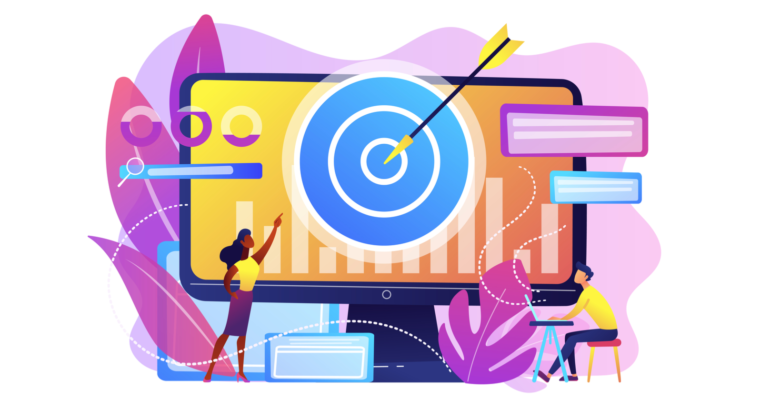By Christi Olson
In my opinion, every single paid search campaign should be a remarketing campaign.
Gasp, I said it.
Should, not could.
Should, because if you have a remarketing strategy using “Target and Bid” audiences with both positive and negative audience bid modifiers you can shape your remarketing strategy to drive traffic across the decision journey.
Now, let me take a break here, because that was a mouthful – and over the remainder of the article I’m going to unpack what this means and five tips that will help you do this.
The variety of remarketing tactics available within paid search today are growing from the remarketing list in search ads (RLSA), to customer match, custom audiences, similar audiences, like audiences all the way to in-market audiences.
In order to take advantage of most remarketing tactics, you need to have tracking set up.
- Google Ads: You either need Google Analytics or the Google remarketing tag implemented.
- Bing Ads: You need to have Universal Event Tracking (UET) set up for your account. UET tracks conversion goals and target audiences with remarketing lists.
Once a customer has engaged with your website in one way, shape, or form, you can use a remarketing campaign to make sure that you’re messaging correctly, because the average consumer engagement is going to involve more than one touch before they actually make the purchase.
Use that space between in a strategic way to guide targeted customer segments in the right direction – all you have to do is capture the data.
The power behind remarketing is the ability to overlay audience data on top of search campaigns and the targeting capabilities that come with it.
Using “bid & target: option for audiences allows you to overlay your audience data on to your search campaigns, and adjust everything from keywords, to ad copy, to landing pages, to your bid strategy based on the user data and intent.
Why You Need to Understand Your Funnels to Create Great Remarketing Campaigns
Before I dig into the tactical steps behind creating a remarketing funnel, here’s an example that characterizes what remarketing is and how it can be used to drive a customer’s purchase cycle.
Let’s say you are an online retailer selling tickets for sporting events. I go to your website looking to purchase tickets to a Seattle Seahawks game.
I go through various pages on your website, looking at different games, availability of seats, and even add a set of tickets to my cart for a game, but before completing the transaction I pull the plug – no sale.
Based on my time spent on your site, you can pull different bits of information and use that to continue to reach me as I continue my shopping journey across the web.
You already know I had some level of purchase intent, so the next time I’m online searching for Seahawks tickets or tickets to an upcoming event, you could go back and remarket that exact game and seats I added to your cart, using the game day details, ticket prices, seats, etc. to make a very targeted ad, specific to me.
5 Tips to Create Amazing Remarketing Campaigns & Funnels
1. Understand & Optimize the Time Constraints Related to Consumer Purchase Cycles Then Adjust Your Membership Duration Accordingly
When you create a remarketing list, you’re allowed to set a membership duration timeframe (or look back window) for how long a person’s cookie remains in your marketing list.
Many marketers leave this set at the default setting of 30 days; however, marketers who are using search for demand generation will create lists with unique look back windows based on the purchase or lead gen cycle.
Here are a few ideas to consider with setting the remarketing window:
- For awareness and brand campaigns, I typically recommend setting a longer look back window.
- For ecommerce and lead gen campaigns, I typically recommend setting the look back window to 10-20 percent beyond the time frame of the average purchase cycle, to include those who may take a little longer to make their purchase.
- For campaigns related to products and services that are perishable (like travel, entertainment, tickets, etc.), you’ll still want to use purchase window tied to the expiration date.
For instance, let’s go back to the Seahawks game.
I know the date of the game (let’s say it’s on December 30) so I know that any tickets I don’t sell by 1 p.m. PT on December 30 are perishable. If today is December 1, I would set my membership duration to 29 days.
If you don’t know the specifics about your purchase cycle to understand what timeframe to set your membership duration, get insights from your analytics account.
In Google Analytics, go to Conversions > Multi-Channel Funnels, then Select Time Lag. This report shows how many conversions resulted from purchase paths by number of days in length.
2. Create Multiple Audiences & Remarketing Lists Based on the Purchase Journey & User Behaviors/Actions
Here, it’s important to really understand the steps of your purchase journey and cycle. Based on those steps and stages, create unique audience lists.
I like to create a purchase journey map where I document:
- What the step of the journey is.
- How I’m tracking that specific step.
- The list name.
- My thought process for the different ways I am thinking about using that specific list.
For the Seahawks ticket example – I can create lists specific to the Seahawks, or their opponent, or CenturyLink Stadium, or potentially to each individual game date so long as that information is passed through the URL string.
Here are a few of the different types of remarketing lists I may create the following types of lists:
- Visited Website
- Visited the ticket page for Football
- Visited the Seahawks Page
- Visited the Select a Seat Page
- Added Seats to Cart
- Started Entering Billing Information
- Completed Transaction
- Created a new account
- Logged into Account
Based on each of these specific on-site actions I could assign them to stages of the consumer decision journey.
FATJOE Link Building Service For SEO Agencies
Thinking about switching Link Building Supplier? Try the #1 Blogger Outreach Service, FATJOE. No duplicates ever, we check your link history.
I could also start to figure out how I would change my search marketing strategy from including the keywords I would target, the ad copy messaging, the landing page, or even my bid optimization strategy, based on the action that the consumer took.
3. Adjust Your Consumer Messaging Based on the Audience List & Keywords Targeted
Once you’ve mapped out the purchase journey and what audience will align to each step you’ll need to figure out how to apply it to your search strategy.
Should you shift consumer messaging based on the keywords they’re searching and where they are at within that purchase journey?
This opportunity to shift your messaging could be one of many different things:
- Ad copy can be customized based on products and services as the consumer goes down the purchase path. Pull in specific data such as pricing, quantity of products available, offers, etc. into your ad copy based on the audience list.
- Use ad customizers like countdown messaging for promotions or events.
- For abandoned carts, you could offer a discount or incentive to bring the consumer back to your store.
This is getting to the heart of how you may be planning on using the specific list.
Let’s go back to my Seahawks game day example. Because the Seahawks tickets are perishable, you may choose to use the countdown ad customizer to include how many days are remaining before game day – or counting down to the hours until the game starts.
Also, think about your ad extensions and how you can customize and leverage your ad extensions to be more specific about stage of the funnel and even where you might choose to land the visitor on the site.
4. Understand Your Landing Pages & Think About Conversion Rate Optimization
Think about where you would take someone if they’re in a different stage of the purchase journey.
How would you optimize your landing page and its content to make it more personal, more curated, and more relevant to that searcher?
In my Seahawks example, where would you choose to take a user is they came back after abandoning the cart and searched for “Seahawks tickets”?
You can set up an A/B test to two different landing pages for the same ad copy to see if you can impact conversion rate.
I would most likely run the test of sending them either to the page for the specific Seahawks game as well as the core Seahawks page.
If my site had the capability, I might also use a site link extension to call out the rough ticket price that was previously selected and take them to the “select a seat” phase of the purchase journey; and then use the additional site link extensions for the core Seahawks page or other upcoming games.
With audiences, you can test the ad copy and landing page elements to optimize to conversion rate!
5. Adjust Your Bid Strategy Based on Audience
Adjusting your bid optimization strategy for audience targeted campaigns is an often overlooked tactic.
Because you can assign audience lists at the ad group and campaign level, it means that you can adjust your bid optimization strategy, too.
Based on the past or previous engagements with the user, would you have a different ROAS/ROI or optimization target?
For instance, I’ve managed search campaigns where net new customers had a ROAS target of 125 percent versus existing customers had an optimization target of 250 percent.
Why?
Because while our existing bid models didn’t include lifetime value, we knew from our internal data that 20 percent of the new customers would become regular repeat customers, so we could be more aggressive to acquire net-new users.
Here’s the main takeaway:
If you’re trying to create an amazing remarketing funnel, it goes back to looking at your data and understanding consumer intent and behavior and then mapping that behavior and intent to your search campaigns.
From there you can customize just about everything when you are using the “Target and Bid” setting for audiences.
Without Data, We’re Just Making Guesses at a Customer’s Intentions
There’s a lot of great information available to you within your analytics account to essentially go down and create a ton of in-depth remarketing lists that can be layered on top of your search campaigns.
This gives you the necessary levers to pull for your keywords, ad copy, landing pages, and your bid optimization tools and tactics – and it should be a central part of your business’s sales strategy.
The world is your oyster, go forth and start creating ah-maz-ing remarketing campaigns.



